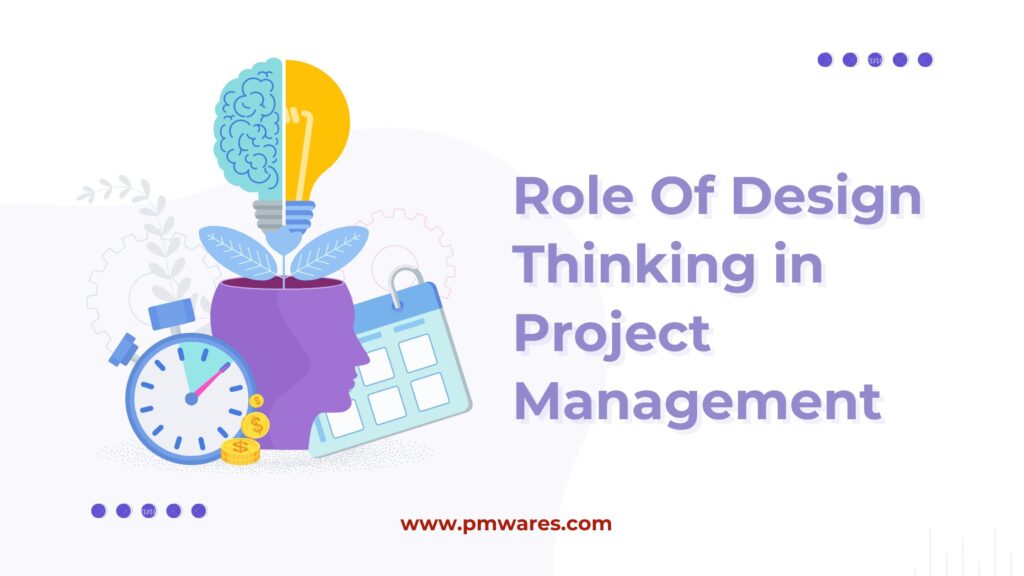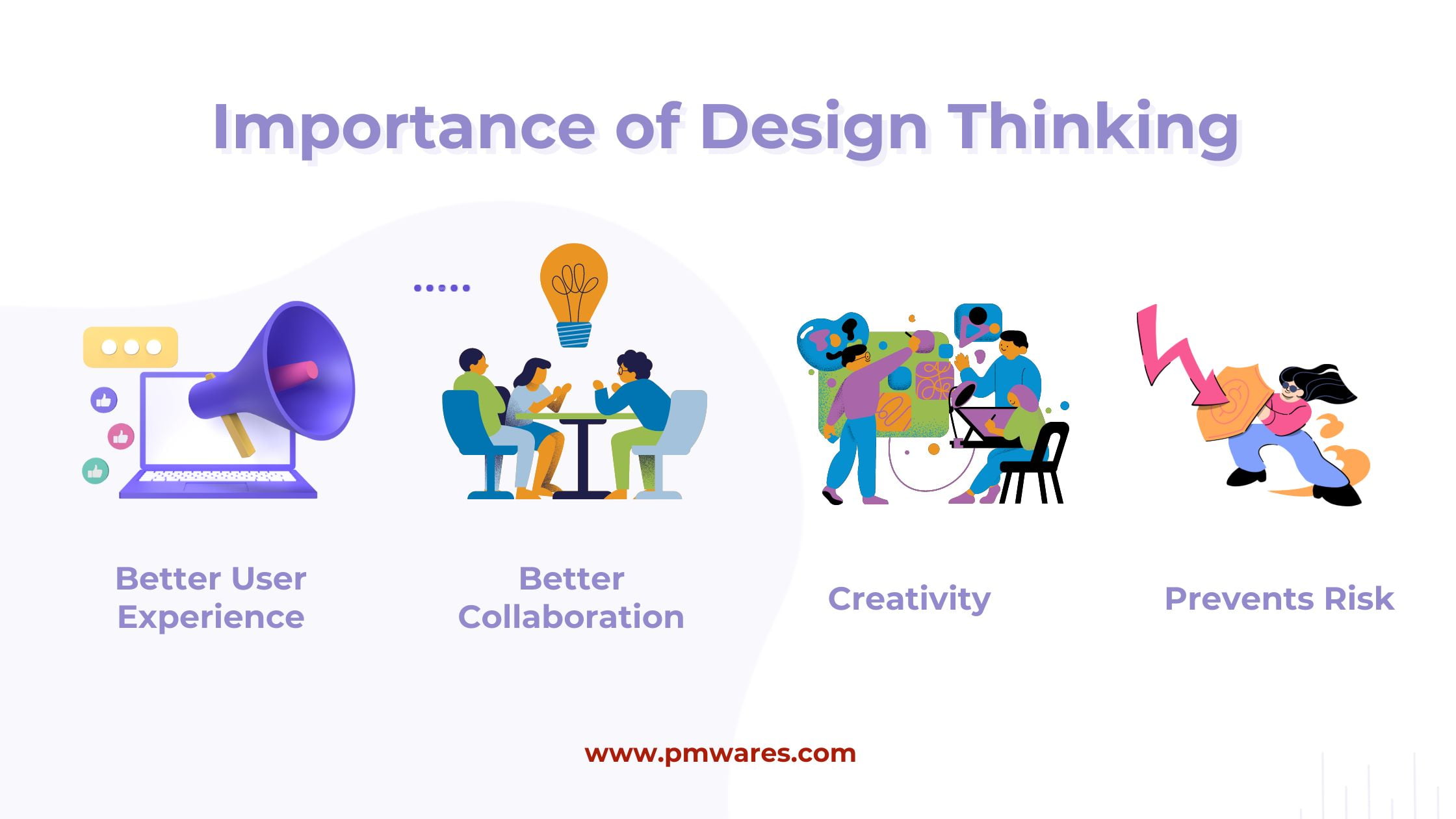Role of Design Thinking in Project Management

If I ask you what your definition of a good project manager is, the first thing which may come to your mind is one who knows how to run a project management software or one who possesses the right technical skills. While technical skills are often important for project managers, very few people think about creativity as an essential skill for them. If every project manager will use the same tools, softwares and methodologies, what will make their deliveries unique from others?
You must have heard that the most beautiful designs often emerge from the messiest explorations. Similarly, the most creative solutions are given by the most curious minds. That is the essence of design thinking, it is a messy, creative and human centered approach to tackle day to day project challenges, let us have a deeper look at this concept and learn how you can implement this as a project professional.
What is Design Thinking & Why is it Important?
Design thinking is an iterative and human-centered approach to problem-solving that can be applied to anything from creating new products and services to tackling complex social issues. Design thinking is a flexible process that can be applied to any problem. The key in this approach is that you need to focus on understanding the needs of the users and then continuously develop and test solutions that meet those needs by using an entirely different way of thinking or we can say redesigning the traditional solutions to make them more innovative. Does that sound interesting to you? Let me give you an example:
As we know hospital waiting rooms are usually stressful and unpleasant experiences for patients due to long wait times, uncomfortable seating, and lack of information. This leads to anxiety and frustration in the hospital environment. So, how can we redesign the hospital waiting room environment with the help of design thinking in such a way that they become a more positive and relaxing experience for patients? We will discuss this later in the article so keep reading.
Role of Design Thinking in Project Management:
There was a misconception about design thinking that it is specific to visual design but in reality, its core principles are so versatile that they can be applied successfully in any field and one of which is project management. While a small or technical project might require a strong analytical mind, a challenging project might benefit more from someone with the ability to think of multiple solutions. So, let us look at the ways in which design thinking can enhance the project management processes.

1) Creativity and Innovation: Design thinking focuses on promoting innovative solutions to the problems which arise in the day to day activities in a project. The brainstorming and prototyping stages of design thinking encourage project teams to challenge assumptions and explore different solutions. This creates a culture of innovative project delivery.
2) Iterative Improvement: The iterative or continuous nature of design thinking can promote continuous testing and feedback loops in your project team. This means issues are identified and addressed early on as soon as they arise, this can minimize the rework and reduce the risk of project failure rates in your organization.
3) Collaboration and Engagement: The collaborative nature of design thinking is such that the whole project team can come together and discuss their own innovative ideas to address any issue in the project execution. This encourages diverse perspectives on each situation and active involvement from every party involved. Ultimately as a project manager it can help you to make better decisions, have improved communication and increase buy-in for project outcomes.
4) Flexibility and Adaptability: Design thinking emphasizes understanding the root cause of every problem in a project, not just treating symptoms. This also requires a proper analysis of the external and internal environment of your organization and hence allows the project team to adapt to changing needs and market dynamics faster and improves project success rate.
Process to Integrate Design Thinking in Project Management:
1) Empathize: This stage starts by understanding the people you are designing for, their needs, motivations, and challenges. This involves conducting user research through interviews, observations, and other methods. Let us continue the example of hospital waiting rooms and understand the pain points of patients.
- User research: Conduct interviews and observe patients in the waiting room to understand their needs, frustrations, and pain points.
- Insights: Patients value clear communication about wait times, comfortable seating, and access to information and entertainment.
2) Define: Framing the problem that you are trying to solve based on your understanding of users’ needs. This involves using the insights from the research and formulating a clear problem statement to understand what we want to achieve which in this case is, How can we redesign the hospital waiting room to be a more positive and relaxing experience for patients?
3) Ideate: In this stage, the focus is on generating a wide range of creative solutions to the problem. For this, you may need to have brainstorming sessions with your team and other techniques to encourage out-of-the-box thinking. Some possible solution to the problem we are discussing can be:
- Interactive displays: Show estimated wait times, provide educational information, or offer games and entertainment.
- Comfortable seating: Offer a variety of seating options, including chairs with ergonomic design, recliners, and areas for children.
- Self-service kiosks: Allow patients to check in, update their information, and access medical records.
- Improved communication: Provide clear and regular updates on wait times and patient progress.
3) Prototype: In this stage we focus on building quick and inexpensive models of potential solutions to test with our users. The purpose of this is to gather feedback and work on the designs which are best suitable for us. To do so, just create simple mockups of each solution to test with users and get feedback from patients on the prototypes to see what works and what doesn’t.
4) Test: This stage focuses on the implementation part after getting feedback from users on your prototypes based on their preferences. This ensures that your final solution is truly user-centered. Based on the feedback, make changes to the prototypes and test them again till you find the most suitable solution. Implement the solution once you have a final design that is well-received by maximum users.
By following the design thinking process, the hospital can create a waiting room that is more comfortable, informative, and relaxing for patients. This can lead to improved patient satisfaction, reduced stress, and even better health outcomes.
Conclusion:
Overall, the scope of design thinking is vast and continues to expand. Its adaptable nature allows it to solve challenges in different fields, making it a valuable tool for everyone from individuals to big organizations who are seeking to create opportunities in complex situations. While adaptation of design thinking in project management requires a deep understanding of the business environment and a creative mind, You can also join a project management training to gain valuable skills which are applicable to design thinking, as their core principles are universal and can benefit anyone. So, if you are a project manager with the mind of an artist who likes to see things in a unique way, do not hesitate to explore and utilize design thinking to tackle challenges and create a positive change in your organization!
Let us know what is the most creative or innovative solution to a problem that you have come across as a project manager in the comment section.